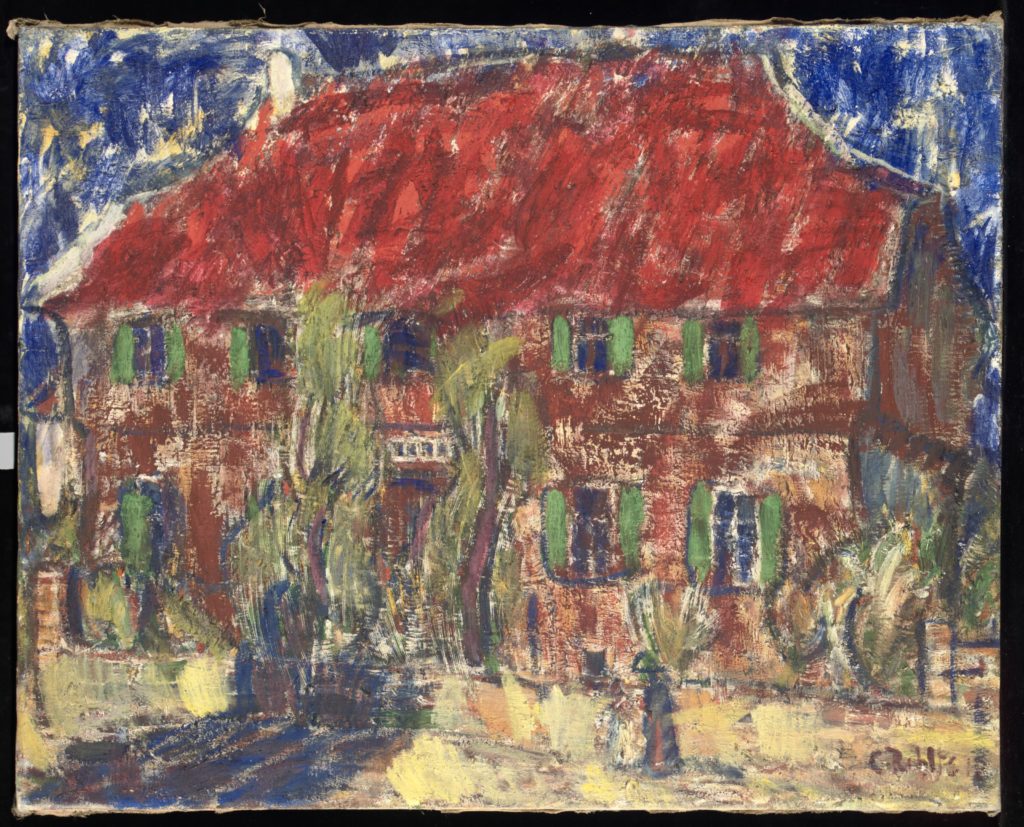Haus mit rotem Dach

Up until the early 1900s Christian Rohlfs (1849-1938) had worked in a rather traditional idiom, akin to open air painting and strongly influenced by Impressionism. Around 1905, however, he became acquainted with Emil Nolde and was thereby introduced to an expressionist painting style.
Through Nolde Rohlfs became acquainted with the works of artists such as Ernst Ludwig Kirchner, Karl Schmidt-Rottluff and Erich Heckel, who at this time were in the process of founding the artist group Die Brücke. Although Rohlfs was not himself a member of Die Brücke, these acquaintanceships had great significance for his own development as an artist. At a mature age, over 50 years old, he began to work within an expressionist mode of expression. His choice of motif, palette, composition and pictorial structure has a definite affinity with the contemporary works of the Brücke artists’.
When it comes to House with a Red Roof from 1912, this work is reminiscent not only of the works of the younger German expressionists at the time, but also of our own Edvard Munch and the so-called ”modernists of the 30s” such as Sigurd Winge and Gert Jynge. The atmosphere in the picture, and even the motif, can resemble Munch’s many representations of Kjøsterudgården in Åsgårdstrand in well-known works such as Girls on the Bridge or The Storm. As for the “modernists of the 30s”, it might seem especially relevant to point to the bold, yet distinctly dry and material quality of the palette, the appearance of which seems related to their experiments with dry pigment painting during the early 30s.
OWG